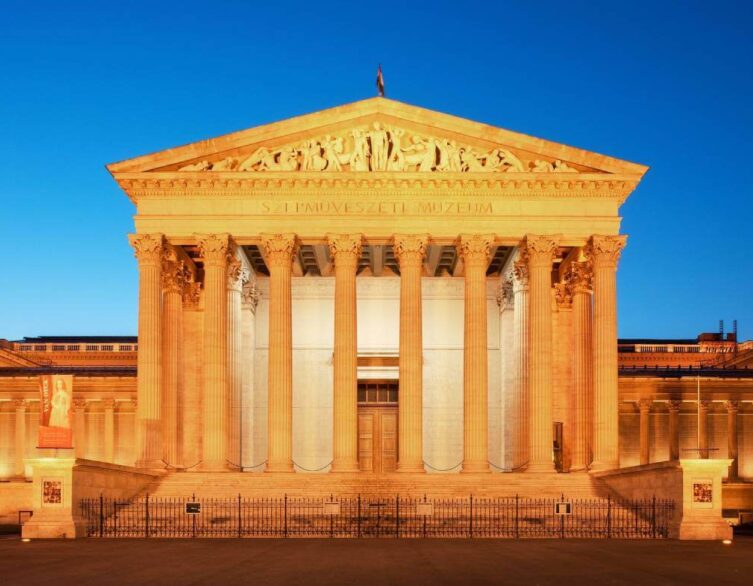A Journey Through Millennia: The Terracotta Warriors Arrive in Budapest

If you’re planning a trip to Budapest this winter or spring, prepare to witness one of the most spectacular archaeological exhibitions to grace Central Europe in a generation. The Museum of Fine Arts is opening its doors to “Guardians of Eternity – The Terracotta Army of China’s First Emperor,” bringing more than 150 ancient Chinese artifacts to Hungary’s capital, including ten original life-sized terracotta warriors that have stood silent guard for over 2,200 years.
Opening on November 28, 2025, and running through May 25, 2026, this exhibition represents something truly extraordinary for the region. According to museum director László Baán, no exhibition of comparable scale focusing on this historical period has been staged anywhere in Central Europe over the past quarter century, making this a genuinely unique opportunity for visitors to the city.
The Emperor Who United an Empire
To understand the magnitude of what you’ll see at the Museum of Fine Arts, you need to know the story of Qin Shi Huang, China’s first emperor. This remarkable ruler ascended to the throne as a mere thirteen-year-old in the third century BCE, inheriting control of just one of seven warring Chinese kingdoms. What he accomplished over the following decades would fundamentally reshape the course of Chinese history.
Through a combination of military brilliance, strategic diplomacy, and ruthless determination, Qin Shi Huang spent years conquering rival states one by one until, by 221 BCE, he had achieved what no ruler before him had managed: the complete unification of China under a single imperial authority. To mark this unprecedented achievement, he created the title “First Emperor,” a designation that would be used by Chinese sovereigns for the next two thousand years.
But Qin Shi Huang wasn’t content merely to conquer. He understood that true unity required more than military might, so he implemented sweeping reforms that would bind his vast new empire together. He standardized the Chinese writing system, eliminating the confusing array of regional scripts that had made communication between provinces difficult. He unified the currency, replacing the diverse coinage systems that had hindered trade across state borders. He even mandated standard measurements for weights and wagon axle lengths, facilitating commerce and road transport throughout the empire.
The emperor’s ambitions extended to massive infrastructure projects that connected his realm physically as well as administratively. He developed extensive networks of roads and canals, established elaborate postal and irrigation systems, and began the monumental task of connecting and expanding defensive walls along the northern frontier—the early construction of what would eventually become the Great Wall of China.
Best deals of Budapest
An Army for the Afterlife
Qin Shi Huang was obsessed with immortality, and when he realized that physical immortality might elude him, he turned his attention to ensuring his power would extend into the afterlife. The result was one of the most ambitious funerary projects ever conceived: a vast underground necropolis that took 33 years to construct and required the labor of hundreds of thousands of workers.
The centerpiece of this city-sized burial complex was an entire army, rendered in terracotta clay with astonishing detail and realism. Nearly 8,000 life-sized warriors were created, each one sculpted with individual facial features, hairstyles, clothing, and armor. These weren’t mass-produced copies but unique portraits, arranged in strict military formation to guard their emperor through eternity.
The discovery of this underground army in 1974 came about purely by chance, when farmers digging a well in China’s drought-stricken Shaanxi province unearthed fragments of what they initially thought was an ancient pottery kiln. What they had actually stumbled upon was Pit 1 of the terracotta army, the richest of the excavation sites, which originally held approximately 8,000 warriors along with several chariots, horses, and military officers.
What You’ll Experience at the Exhibition
When you visit the Museum of Fine Arts to see “Guardians of Eternity,” you’ll encounter a meticulously curated journey through more than a millennium of Chinese history, spanning from the 8th century BCE to the 3rd century CE. The exhibition’s centerpiece features those ten remarkable terracotta warriors, displayed as they were originally discovered by archaeologists in China, arranged in their military formations.
One of the warriors you’ll see stands more than two meters tall and depicts a mid-ranking military officer, an infantry commander who would have marched alongside chariots and independent foot units. This particular statue, discovered in 1980, still bears visible traces of the original colored paint that once decorated the warriors’ faces, armor, and robes—a reminder that these silent sentinels were once brilliantly painted figures. His distinctive flat, two-part headdress identifies him as a middle- or lower-ranking officer in the emperor’s vast clay army.
Beyond the famous warriors themselves, the exhibition showcases the broader context of imperial Chinese life during the Qin dynasty. You’ll encounter ceremonial objects made from bronze and jade that ancient rulers used when making offerings to their ancestors. You’ll see architectural elements that once adorned imperial buildings, including ceramic roof decorations and metal reinforcements for columns. The exhibition even includes artifacts related to the emperor’s quest for immortality, particularly the beautiful ceremonial horse-drawn chariots meant to carry him into the afterlife.
The Museum of Fine Arts has also incorporated an immersive installation that introduces visitors to traditional Chinese cosmological concepts, particularly the dynamic interplay of the five elements—wood, fire, earth, metal, and water—that ancient Chinese thinkers believed governed the universe’s functioning. This artistic element helps visitors understand the philosophical and spiritual worldview that shaped everything from imperial decision-making to the design of the burial complex itself.
The exhibition doesn’t end with the Qin dynasty’s collapse following the emperor’s death in 210 BCE. The final section explores how the subsequent Han dynasty built upon Qin Shi Huang’s foundations, consolidating imperial power and expanding China’s reach westward along what would become the Silk Road. Selected artifacts from the Yangling Mausoleum, the tomb of the sixth Han emperor Jing-ti, provide insight into how imperial authority evolved and how China’s integration into long-distance trade networks transformed the empire’s economy and culture.
Planning Your Visit
The Museum of Fine Arts is conveniently located at Dózsa György út 41, right on Heroes’ Square in Budapest’s XIV district. Getting there couldn’t be easier: simply take the M1 yellow metro line to Hősök tere station, which puts you just a two to three-minute walk from the museum entrance. Several bus lines also serve the area, including routes 30 and 30A, stopping at Hősök tere.
The museum welcomes visitors Tuesday through Sunday from 10:00 AM to 6:00 PM. It’s closed on Mondays, so plan accordingly. On the second Friday of each month, the museum extends its hours, remaining open until 8:00 PM if you prefer an evening visit.
General admission to the museum typically costs 5,800 Hungarian forints for adults, though EU citizens aged 6 to 26 or 62 to 70, as well as adults accompanying children, can enter for 2,900 forints. Children under six, EU citizens over 70, and Budapest Card holders enjoy free entry. Keep in mind that special exhibitions like “Guardians of Eternity” require an additional ticket beyond regular museum admission. It’s highly advisable to purchase your tickets online in advance through the museum’s ticketing system, as this major exhibition is expected to draw significant crowds.
Why This Exhibition Matters
While Budapest welcomed a much smaller terracotta army exhibition back in 1988, showing nine warriors at the National Museum, that display reflected the limited archaeological knowledge available 37 years ago. The current exhibition represents half a century of accumulated research and discovery, offering the most comprehensive and nuanced portrait yet assembled of the first Chinese imperial dynasty and the functioning of an ancient empire.
The logistical achievement behind bringing these artifacts to Budapest shouldn’t be underestimated either. Each of the fragile 2,200-year-old objects required specialized packing and transportation to ensure it survived the journey from Shaanxi Province museums intact. The total value of the artifacts on display is insured for tens of billions of Hungarian forints, reflecting both their irreplaceable historical significance and their extraordinary fragility.
Every single item in the exhibition comes from museums in Shaanxi Province, the region that once served as imperial China’s capital. The largest contributions come from the Museum of the First Emperor’s Mausoleum, the Han-era Yangling Mausoleum Museum, and the Shaanxi Provincial Institute of Archaeology. The fact that Chinese cultural authorities have agreed to loan so many precious artifacts makes this exhibition exceptional even by European standards.
Beyond the Warriors
While the terracotta soldiers rightfully command the spotlight, they’re just one element of the emperor’s vast underground realm. Archaeological excavations over the past five decades have revealed that Qin Shi Huang’s burial complex included much more than military guardians. The emperor’s clay retinue encompasses delightfully realistic bronze waterfowl, terracotta musicians to serenade him, clay officials to administer his afterlife government, and even troupes of acrobats created with the same meticulous techniques used for the warriors.
The central tomb chamber itself, where the emperor’s body presumably rests, remains unopened to this day. Chinese archaeologists have preferred to excavate the surrounding burial pits first, gradually building knowledge about preservation techniques and the complex’s layout before attempting to enter the emperor’s final resting place. This cautious approach means that many secrets of the mausoleum still await discovery, and future excavations will undoubtedly reveal more wonders from this underground city.
A Once-in-a-Generation Opportunity
Exhibitions of this scale, featuring genuine artifacts from the terracotta army alongside such a comprehensive collection of supporting material, are exceedingly rare outside of China. The convergence of diplomatic relationships, museum cooperation, and cultural exchange that made “Guardians of Eternity” possible represents years of planning and negotiation.
Whether you’re a history enthusiast fascinated by ancient civilizations, an art lover drawn to the aesthetic achievements of Chinese craftspeople, or simply a curious traveler looking to experience something truly extraordinary during your Budapest visit, this exhibition offers something remarkable. Standing before these silent warriors, each one an individual portrait of someone who lived and served an empire over two millennia ago, creates a powerful connection across the vast span of human history.
The exhibition runs until May 25, 2026, giving visitors throughout the winter and spring months the opportunity to experience this extraordinary window into ancient China’s most transformative era. Don’t miss your chance to witness what museum director László Baán rightly calls a genuine sensation for all of Central Europe.
Related events
Related attractions

















